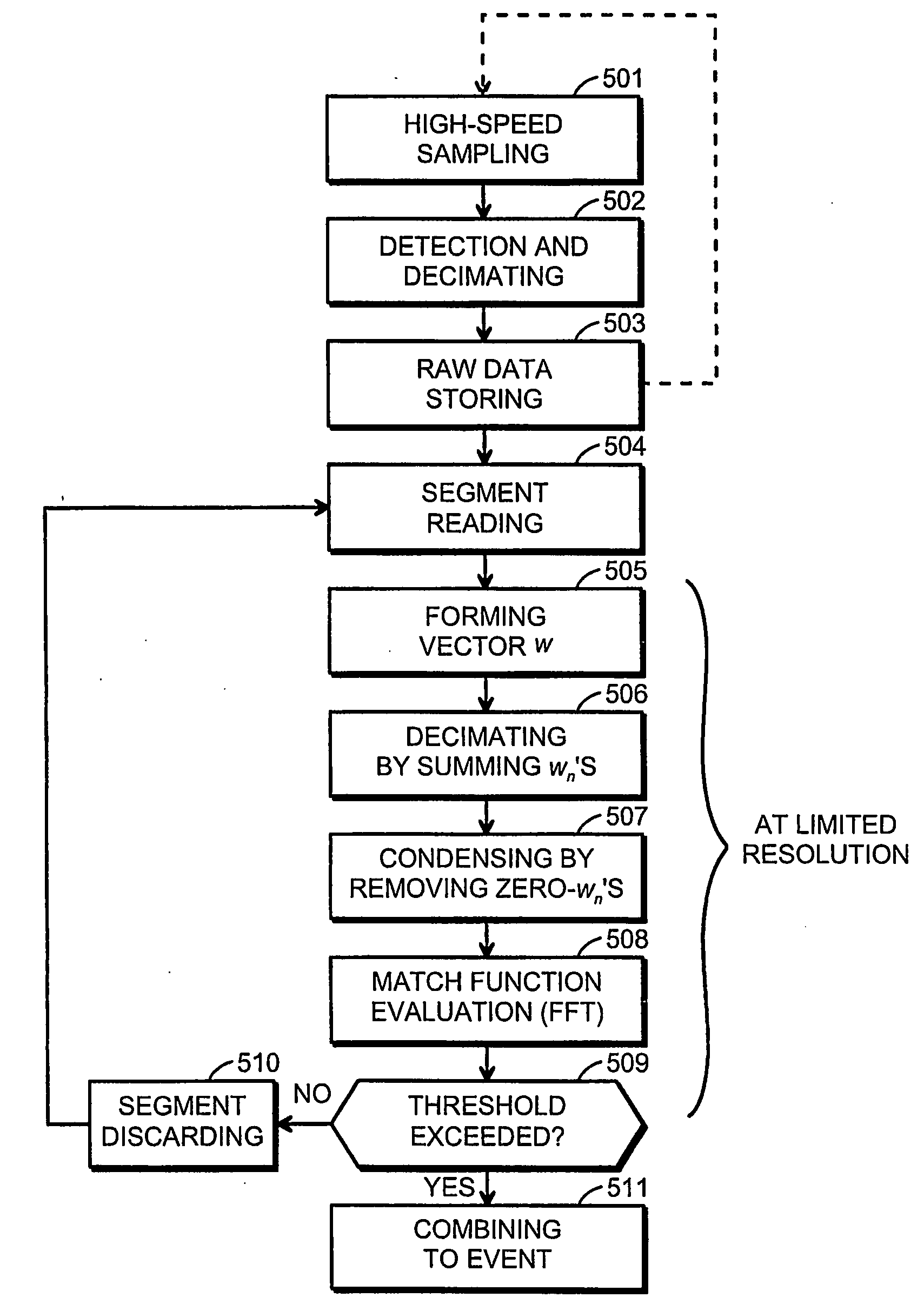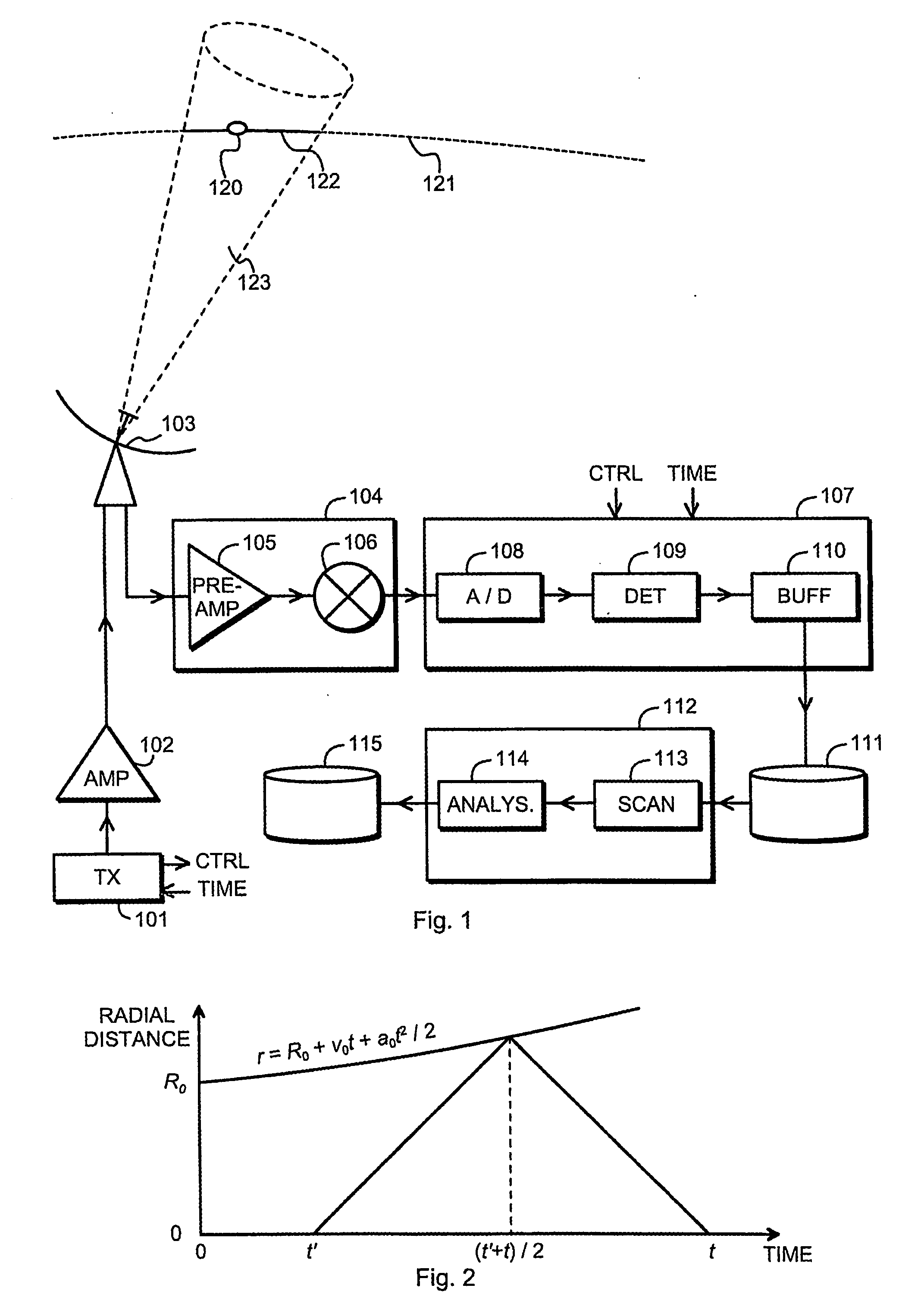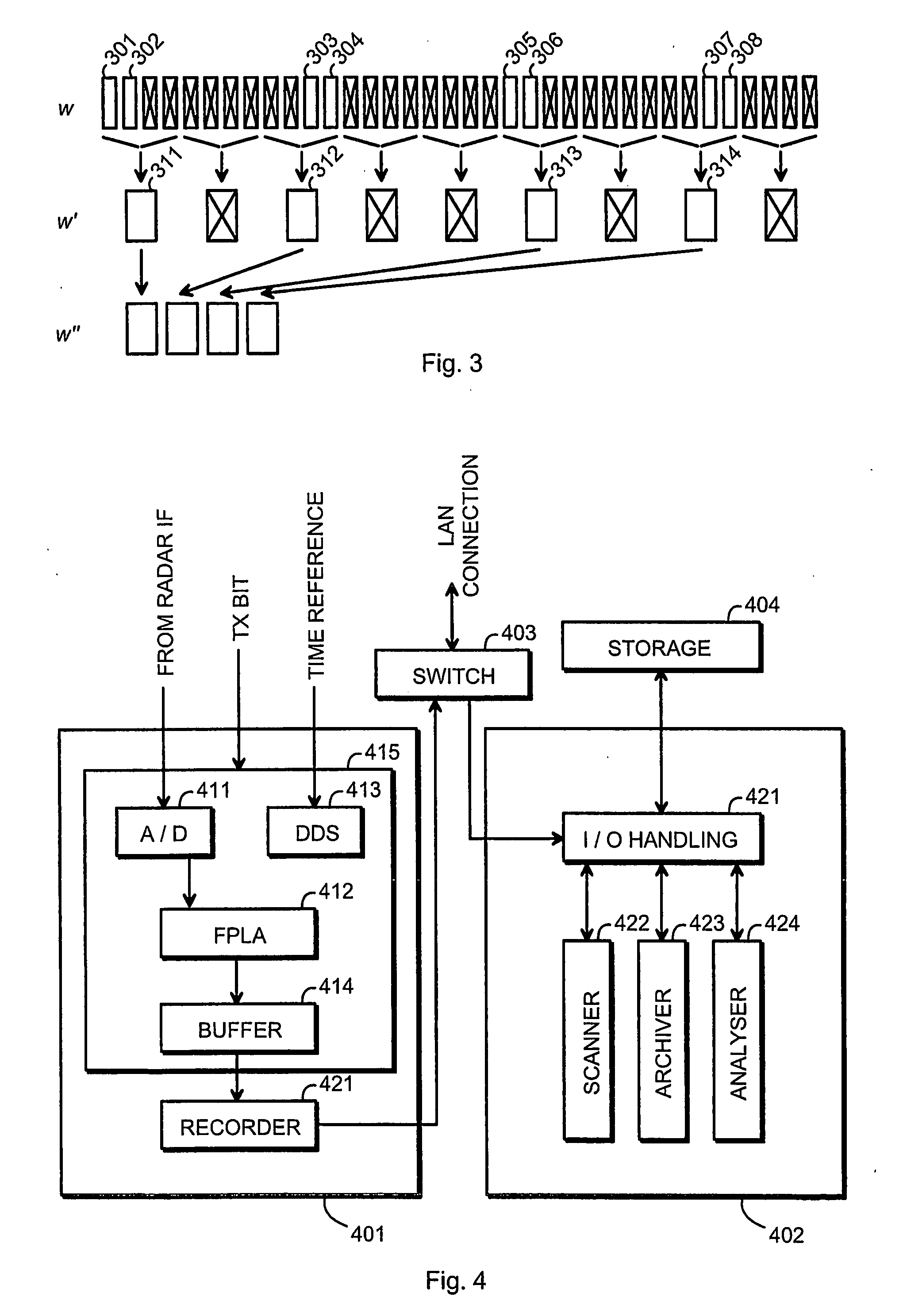Method and Arrangement for Detecting Moving Objects with a Radar
- Summary
- Abstract
- Description
- Claims
- Application Information
AI Technical Summary
Benefits of technology
Problems solved by technology
Method used
Image
Examples
Embodiment Construction
Mathematical Derivation
[0026]The task of using a radar measurement to detect a distant moving object can be described simply as transmitting a known signal x(t) and finding the (best estimate of the) appropriate parameters of a hard target echo signal s(t) in the presence of gaussian noise γ(t). A received signal z(t) is a sum
z(t)=s(t)+γ(t) (1)
and all mentioned quantities can be treated as complex-valued (detected) waveforms.
[0027]Using statistical inversion means that we use a parameterized model for the signal s(t) and find the most probable signal among a number of model signals, given the measured signal z(t).
[0028]Before making further assumptions about the model signals we only assume that a model signal depends linearly on the complex amplitude b and nonlinearly on some other parameters, which are collectively denoted by θ. In other words, our assumption about the correct, noise-free target echo signal has the form
s(t)=b·χ(θ;t). (2)
[0029]We sample the received signal z(t) u...
PUM
 Login to View More
Login to View More Abstract
Description
Claims
Application Information
 Login to View More
Login to View More - R&D
- Intellectual Property
- Life Sciences
- Materials
- Tech Scout
- Unparalleled Data Quality
- Higher Quality Content
- 60% Fewer Hallucinations
Browse by: Latest US Patents, China's latest patents, Technical Efficacy Thesaurus, Application Domain, Technology Topic, Popular Technical Reports.
© 2025 PatSnap. All rights reserved.Legal|Privacy policy|Modern Slavery Act Transparency Statement|Sitemap|About US| Contact US: help@patsnap.com



